|
"Getting stuff back is the thing I am talking about. Getting stuff back once you lose it. Getting democracies back once
you lose it. Getting freedom back. Getting freedom of movement back. Getting freedom to talk with your family about
politics back. It's a rough road. It's really hard to get it back. It take a lot, a lot of sacrifice to get things back.
That's why so many of us are SO committed to not going there. Now, we seem to be one of the countries that have not gone
'there.' We seem to be one of the countries that is maintaining some kind of semblance of democracy. Try to make it a better
system. Try and make it a broader system. To make a system that people can assess that don't have access to it now. They're
living in the shadows or they live in remote neighborhoods, let's say, or very poor neighborhoods let's say, or very poor
rural areas. You know, you have a president who understands that, and is trying to build stuff - there. Trying to invest
there. Trying to clean up lead pipes there. To do the right thing when no one is looking there.
- Randi Rhodes June 7th, 2024
It;s so hard to get freedom of movement back
| HIGHWAY WISHES |
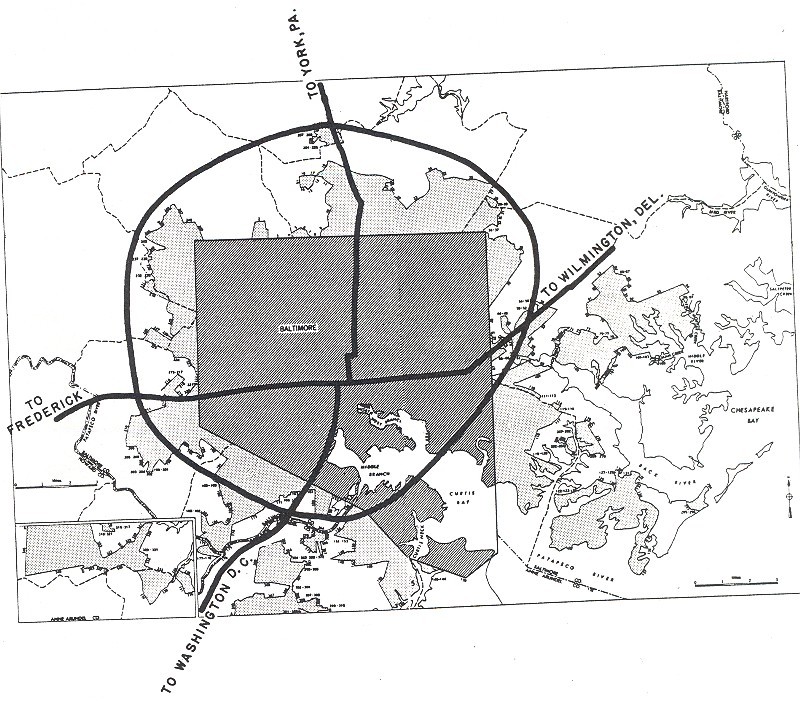
|
| THE SMITH REPORT MAP OF 1945 |
"All around Baltimore by Street Car and Bus" - 1935 Map and Directory - issued by United Railways and Electric Company, Baltimore
"TOMORROW'S ROADS TODAY" EXPRESSWAY CONSTRUCTION IN MARYLAND, : 1948.1965 -r -. Historic Context and Survey of SHA Bridges
Statewide with Determination of Eligibility Forms SHA Project No. SP0310C42
"The Trolley Trail runs on the track bed built for the #9 Route that connected Ellicott City to Catonsville and Baltimore.
Many used the line to get to work or shop in Baltimore. 'I could tell by the color whether to board the front or the back,'
recalls Jerry Kelly of Catonsville, about the streetcars he rode in the 1940s and 50s. 'I only had to wait a few minutes
before I saw the yellow car coming up the hill. Just one nickel and I could ride.'"
"The #9 Ellicott City Streetcars at one time went all the way into Downtown Baltimore before the line was cut back to Catonsville
Junction. The rotten National City Lines Bus Company cut the line back when they converted the #14 line to bus operations,
therefore isolating the #9 line to the short run from Catonsville Junction into downtown Ellicott City. This lasted until
1955 when the bus company tried to convert to bus operations; however, the bus had a complete different route to follow
and virtually nobody used the service, thus it was discontinued three months later. The #8 PCC Cars continued
to operate until November 3, 1963 when the bus company converted to bus operations.
"ALL ABOARD Soon the Streetcars Will Roll Again" - Baltimore Sun (April 1992)
"On May 31, 1955, Warren read the Court's unanimous decision, now referred to as Brown II, instructing the
states to begin desegregation plans "with all deliberate speed."
THE Last trolleyed streetcar ride serving Baltimore and Ellicott City back and forth took place on June 19th, 1955,
and no public transportation has been offered since. Clearly, the easiest way to deal with Brown Versus Board of Education
May 31st, 1955 ruling, is to destroy the ability for blacks to travel, work, and live - so their children could not go to
schools; in Ellicott City.
"In seventh grade, after I finished elementary school, I went to Woodbourne Junior High. I thought I was very fortunate; we
all knew the white schools had better facilities. It was the closest to my house, and I could walk, but all the feeder schools
were white. It was a shock. I started there in 1957 and was the only black student in my class, and I suffered a lot of problems
that first year. The teachers were nice, but the kids called me names, and I cried every day. I also became ashamed because
I was dark brown-skinned, and, in those days, the lighter you were, the more you were considered good-looking and accepted.
And I remember Mr. Walpert, our social-studies teacher, showing a filmstrip about slavery in class and just wanting to slink
down and hide in my chair. The boys called me 'pickaninny' and 'Aunt Jemima.'" - Edna Jackson Greer
"Sometimes I think how odd it must be for those people who fled Edmonson Village, which used to be all white, escaping
to Ellicott City. Now, many of those schools that their grandchildren—who have so many diverse friends—are
attending in Howard County are more integrated than they ever would’ve imagined." - Keiffer Mitchell Sr.
"How the Berlin Wall Worked" - neo (2024)
"Why Germany is Still Divided" - The Present Past (2023)
"Teaching The Rebellious Life of Mrs. Rosa Parks" - Zinn Education Project
"Transportation Protests: 1841 to 1992." - Zinn Education Project
"Thanks to Title VI, the Federal Transit Administration requires recipients of federal transit funding to comply with a series
of requirements that strive to limit negative impacts on communities of color. However, as we conclude in our recent report,
"Inclusive Transit: Advancing Equity Through Improved Access and Opportunity," Title VI has done very little to advance transportation
equity. It's a passive, malleable policy, the specifics of which are often left to the discretion of transit-agency governing
bodies. This creates enough wiggle room for agencies to effectively render compliance meaningless, whether by malice or accident.
As a result, projects that have a disparate impact on low-income communities of color can still receive a rubber stamp from
the FTA. ....
Title VI requirements are simply not a sufficient tool for the job. Our most vulnerable communities will continue to lose
out until more transit agencies start developing policies that prioritize equity in decision-making -- rather than simply
checking a box.
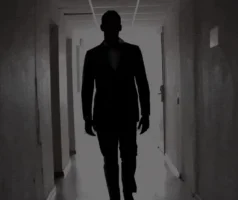
|
| Rebuilding Together Of The Triangle GIF |
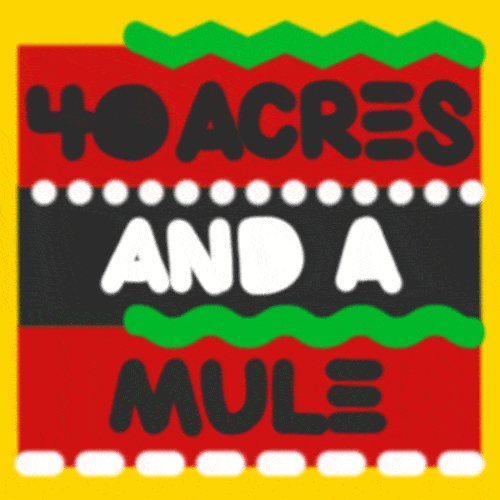
|
| American Blm GIF By INTO ACTION |
.............................................................................................................................................................................................................................................................................................................................................................................................................................................................................................................................
"Greater Baltimore Committee (GBC) Must Recognize That Disadvantaged Black Neighborhoods Matter" - The Baltimore Banner (2023)
This page is to learn and comprehend the full meaning of, "40 Acres and a Mule," a mule being a mode of transportation, and
what transportation reparations means and can be today.
"Trail of Tears" - John Denver
Historian Amy Sturgis - Learn Liberty (2012)
"Someday" - The Gap Band
| Kansas City Streetcars |
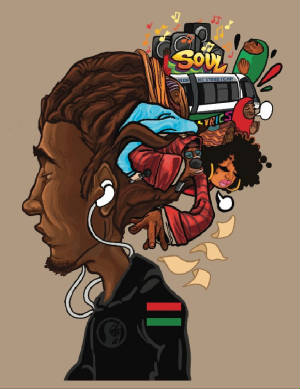
|
| Black History Month Celebration ~ Artist JT Daniels |
FORTY ACRES & A MULE
How Black Farmers Have Lost their land in the United States....
"Something Southern: A History of Mules in South Georgia" - Georgia Southern University Museum
THE MULE
"Animal Power" - "Energy History" - Yale University
American Mule Museum
"The mule is a hybrid of a horse and donkey. Collectively four or six mules could carry more in a wagon than they could individually
on their backs with the current pack system. The average wagon load was a ton to a ton and a half as compared to only two
hundred to two hundred and fifty pounds on a pack. The key issue was that individually they could keep up
with the cavalry column - while the wagons could not."
Transportation and Revolt: Pigeons, Mules, Canals, and the Vanishing Geographies of Subversive Mobility [Book]
"Then And Now: From Downtown's Mule-Drawn Trolley To Light Rail" - Downtown Phoenix DTPHX
TODAY'S MULE
"I Want a Mule as Transportation" - Sheena Hileman 2023
If you haven't, please read, view, and study the entire transportation section to learn of how lack of transportation creates
poverty, and how freedom to travel anywhere (like a wagon wheel with inner circle, spokes, and outer circle), on rail only,
provides each person to prosper through health and opportunity. No transportation system, especially owned
by a local or state government, in this case, The State of Maryland, should dictate where and when its people
are allowed to travel - move, limit through geographical boundaries the ability for work, entrepreneurship (trading and
selling), for pleasure, and nature experience for mental and spiritual health. Tyrannical controlling nature of State of
Maryland's Maryland Transportation (Authority) Administration (MTA), has for over 52 years degraded its own citizens well-being,
well, only where MTA busses are. Forced to pay "too much" fares, coupled with law mandated every other year forced raise of
fares while tired-vehicle owners are given destroyed animal habitat and trees-to-cement/asphalt/concrete heat absorbing acres
of subsidized free storage for polluting cars.
The State of Maryland still has no comprehension that transportation decisions completely dictates whether, in as little as
even one decade, people can still dwell here. More erection and construction of roads, stroads, and highways just add to urban
heat island. We must COOL: focus on planting tree and other vegetation to restore habitat and solar farming only above
roads and on top buildings with solar roof shingles (have no parts to take apart that are chemically toxic.
Choosing further segregated one line light-rails, with no comprehension that everyone needs to get to everywhere - as, regarding
jobs, automation picks no winners. Lack of integrating Greenhouse Effect - cooling Urban Heat Island (well spread in suburban
sprawl) is simply not practiced at all in the State of Maryland, evidenced by land use for transportation, which entails ending
cutting down acres for automobile storage and using cement/asphalt/concrete/coal tar intensive projectsothers are for subsidized
suburban projects and acres of free storage parking spaces, embracing specially designed to drive polluting tired-vehicles,
where
"Many of the nation's regional transportation systems are regional in name only, with a good number of metropolitan
public transit systems comprised largely of, 'Separate and Unequal' urban and suburban bus and rail operations built along
race and class lines. Without doubt, this, 'Transportation Apartheid” is firmly entrenched across our nation.
Therefore, the struggle against transportation apartheid has always been - and remains today - about civil rights and
human rights.
Transportation is a basic ingredient for quality of life indicators such as health, education, employment, economic development,
access to municipal services, residential mobility, and environmental quality. Thus transportation continues to be a civil
rights and human rights issue. Improvements in transportation investments and air quality are of special need to low-income
families and people of color who are concentrated in the nation’s most polluted urban centers. Transportation investments,
enhancements, and financial resources, if used properly, can bring new life and revitalize urban areas. They can also aid
in lifting families out of poverty."
| TIME FOR EQUITY |
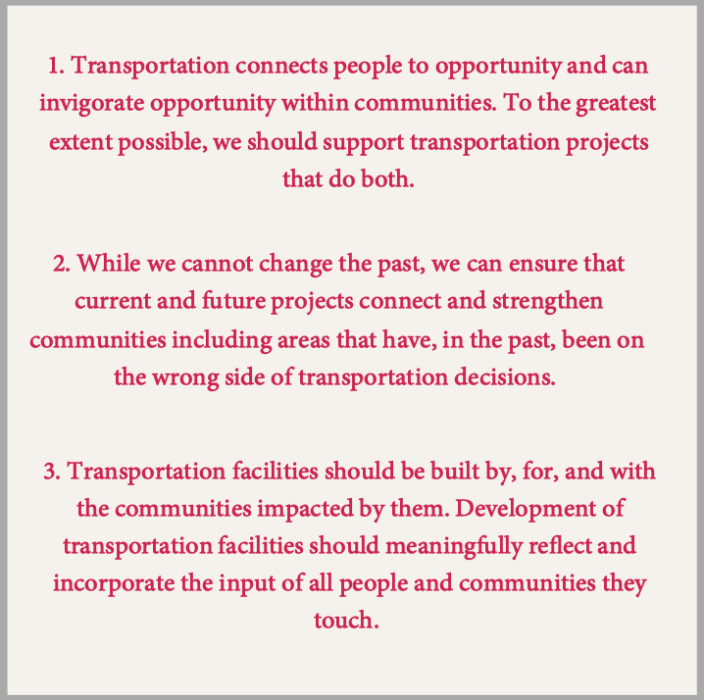
|
| ANTHONY FOXX - U.S DEPARTMENT OF TRANSPORTATION SECRETARY FOR PRESIDENT BARAK OBAMA |
"We 'Honor' Dr. Martin Luther King Jr. With These Travesties" - City Nerd (2023)
"Transport showed some of the greatest inequality, with the top 10% of consumers using more than half of the energy related
to mobility – the vast majority of it fossil-fuel based."
"We found that none of the energy categories are free from energy inequality, or benefit populations to an equal degree.
Transport-related consumption categories are among the least equal. Without reducing the energy demand of these services,
either through frequent-flyer levies, promoting public transport and limiting private vehicle use, or alternative technology
such as electric vehicles, the study suggests that as incomes and wealth improve, our fossil fuel consumption in transport
will skyrocket.” - Researcher Oswald, PhD - School of Earth and Environment, University of Leeds
ENERGY INEQUALITY: "Why Rich People Use So Much More Energy: 'It's Mainly All the Traveling,' Says a Comprehensive New Study."
- Vox (2020)
There is a difference between preference and necessity: "Public transportation is desired by many but is even more important
for lower-income people who can't afford cars. - Harvard Professor Rosabeth Moss Kanter, Book - Move: Putting America’s
Infrastructure Back in the Lead
"Urban transport interventions (new roads, metros, bus rapid transit) are often designed to reduce urban congestion due to
increasing car use, and can disproportionately benefit wealthier sections of the population unless properly designed." - Page
7
"About 1.3 million people die each year from road injuries and 78 million require medical care. .... Transport-induced air
pollution is estimated to cause 184,000 deaths each year, through its effects on heart disease, strokes, respiratory infections,
and lung cancer.
"Involuntary evictions for transport investment are common. There is evidence that many poor communities, particularly those
in ‘illegal’ squatter settlements, are at high risk. Over 4.3 million people worldwide were affected by forced
evictions in 2007-2008, with transport responsible for a substantial percentage. A World Bank study found that 16% of evictions
related to its projects were due to transport investments." - Page 8
"Historically, building roads has been associated with controlling populations, accessing resources and developing profitable
markets, with little attention to poverty issues (deGrassi, 2005). As recently as the 1990s, the poverty implications of transport
were largely ignored as the transport sector was dominated by political, economic and engineering considerations, with little
understanding within transport ministries of poverty-reduction criteria, gender and social issues or participatory approaches
(deGrassi, 2005). In an important study for the World Bank, Gannon and Liu (1997) noted that there were no guiding principles
for, or systematic approaches to, poverty issues in the Bank's transport sector operations, as transport was considered to
have only an indirect relationship to poverty. However, through case studies and other research a significant body of knowledge
has been developed on the transport burden of poor people in both urban and rural contexts." - Page 12
"We 'Honored' Dr. Martin Luther King Jr. With These Travesties" - City Nerd (May 3rd, 2023)
In 1993, K Street was renamed to become Martin Luther King Jr. Boulevard. Still has streetcars running on it.
Fred David Gray Sr. - Martin Luther King, Jr. Research & Education Institute, Stanford University
Below is broken down into the the inequality of usage of public transportation.
RAISED PRICES AND CUT HOURS LOWERED USAGE [Can't use if closed.]
"On July 1 of that year, Metro raised train fares by between 10 and 25 cents, and bus fares by 25 cents, while also opening
train stations later on Sundays and closing them earlier on weekends."
"The decline “should be a wake-up call that our system isn't serving our community well,” said Ed Lazere, executive
director of the DC Fiscal Policy Institute, a progressive think tank."
PEOPLE BECOMING FINANCIALLY POORER
"But over the last 10 years, the census estimates the number of workers in D.C. earning low wages has grown from 31,596 between
2008 and 2012 to 34,148 over the past five years."
ILL-CONCEIVED ["Make improvements" = repairs already needed, and then extend "Peak" so charge more]:
"Last Thursday, Metro's board began considering General Manager Paul Wiedefeld's budget proposal, which recommended a number
of service improvements to try to win back riders. Though ideas like running frequent peak hour service for longer in the
mornings and afternoons could attract more riders of all incomes, board members concerned about the proposal are considering
charging peak fares longer as well, a move that could hurt poor riders."
IDEA FROM ANOTHER TRANSIT AUTHORITY:
"New York City, for instance, is planning to begin providing half-priced fare cards next year to those living below the poverty
line. Metro Board Chairman Jack Evans, in an interview, called such a subsidy a 'good idea,' though Metro would have to figure
out how to do it and it would cost a large amount of money. Metro now subsidizes fares for seniors and those with disabilities,
but not for those experiencing poverty."
SHORTSIGHTED - PEOPLE WORK ALL HOURS, AND ALL DAYS
"'We have people going to and from work at all hours.'
Nelson is supposed to be at work at 8 a.m, the same time stations now open Sundays. With trains no longer an option, she tried
taking Lyft but found it cost $20 to get to work from her home in Temple Hills, Md. Another unappealing option, according
to Metro's online trip planner, involved taking three buses and a two-hour journey. On other days she works a double shift.
By the time she gets off work, all the trains have stopped running.
'Those who have to go to and from more than one job end up having to pay the higher fares more times each day than other workers,'
he said.
MULTISYSTEM USAGE FORCED TO PAY AGAIN:
David Alpert, founder and president of the civic group Greater Greater Washington, said the fare increases also hurt those
who have to take a combination of a bus and a train to work. Because Metro didn't increase its 50-cent discount on transferring
from one mode to another, those making transfers end up paying higher fares on each leg of their trip.
NOT ALL EMPLOYEES OFFER TRANSPORTATION SUBSIDY, USUALLY LOW INCOME:
"An internal Metro staff report laying out ideas for increasing ridership earlier this year also noted that fares disproportionately
affect lower-income workers because they are less likely to get transportation subsidies through work. While 66 percent of
the highest-income Metrorail riders get subsidies, only 10 percent of the lowest-income riders do, said the report, which
estimated that subsidizing fares for low-income people would mean 20,000 to 35,000 more trips for the system annually."
TOO EXPENSIVE TO LIVE NEAR SUBWAY STATIONS:
"'Also hurting lower-income workers is that gentrification has pushed them further from areas close to train stations and
bus routes,' said Yesim Sayin Taylor, executive director of D.C. Policy Center.
Indeed, a 2015 census report found that those making $25,000 to $49,999 had made up 29 percent of the workers living within
a half-mile of a rail station in Washington between 2006 and 2009. But as housing prices have increased, the percentage of
people making that much around rail dropped to 22 percent, between 2011 and 2013.
'This has created a terrible imbalance in housing near Metro stations, resulting in people with less means having to go much
further than wealthy people to access Metro stations,' said Paul Mackie, research director for Mobility Lab, Arlington County
commuter services."
POST SCRIPT TO ARTICLE: Wealth people who live near the stations take subways for - FUN!!!! Pleasure trips - concerts, museums,
sports events, parades....
- "New Figures Show Decline in Number of Low-Income Workers Who Ride Metro" - The Washington Post (2018)
2014 USA Streetcar Projects, lists MD Projects - Yet nothing for Baltimore [NOW it can be proposed....]
Transportation projects that are built to last
"It is therefore the policy of my Administration that the Federal Government should pursue a comprehensive approach to
advancing equity for all, including people of color and others who have been historically underserved, marginalized, and adversely
affected by persistent poverty and inequality. Affirmatively advancing equity, civil rights, racial justice, and equal opportunity
is the responsibility of the whole of our Government." - President Biden [January 20th, 2021]
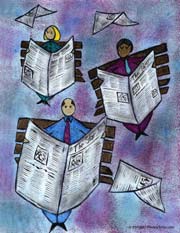
"Goodness Gracious my generation's lost
They burned down all our bridges
Before we had a chance to cross
Is it the winter of our discontent or just an early frost?"
"From the construction of the transcontinental railroad to the Montgomery Bus Boycott, transportation has always been
inseparable from America's struggle for racial and economic justice. At its best, transportation can be a powerful engine
of opportunity, connecting people to jobs, education, and resources; whether they live in a big city, a rural community, or
anywhere in between. Ensuring equity and accessibility for every member of the traveling public is one of the Department of
Transportation's highest priorities." - Secretary Pete Buttigieg
"No One Asks How are we Going to Pay for War. So, Why Should we for Public Transit?" - In The Public Interest (2020)
Starting in the 1990's, tax breaks continue for wealthy and corporations, defunding Massachusetts Bay Transportation Authority
(MBTA), "T," even though their employees depend upon. Large cities like Seattle, Los Angeles, New York, Washington D.C.,
Miami as well as counties as a whole (Montgomery County Md.), have not only reduced fare, but free fare, like Kansas
City and Olympia. The "T" has even privatized their fare collection system to two equity for profit corporations, committing
hundreds of millions of state dollars to them, rather than reducing rider fares.
"Fares have nearly tripled since 2000, rising faster than inflation."
"Study: Houston Among Cities With Poor Sustainable Transit Systems" - Houston Business Journal (2017)
HOUSTON VERSUS HONG KONG "Why Transit Cities are Better for Everyone" - RM Transit (2022)
"The Beatties Ford Road Corridor — the part of the city I grew up in, has been in rough shape for a long time. As a
city council man and as mayor, I represented the entire community but I took a deep interest in trying to figure out how to
turn that corridor around. We passed neighborhood bonds — getting Ike Heard, Sr. and his neighbors in McCrory
Heights the sidewalks they had been promised 50 years earlier. We put a police substation on the corridor.
We put a business park on the corridor — where the Mecklenburg County Bar now sits. These things happened
quietly because the resource burden was relative light. However, when we made a run to put a Streetcar on that corridor,
all hell broke loose.
'It is a streetcar to nowhere,' some said. 'We are taking it out of order,' others said. 'It is a waste of money,' others
said. What I wanted to say — and sometimes did say — was, 'Just listen to yourselves.' 'We put a bridge
over I-485 in Ballantyne. We built farm-to-market roads in the University area and extended light rail there. What is our
answer for East and West Charlotte? There is enough wealth, ingenuity and need for the private sector to join the city
in reinventing the Beatties Ford Road Corridor and, in doing so, showing ourselves and the broader world that this city is
serious about tackling its problems. It is not just a matter of transportation; it’s a matter of building a sustainable
community, and access for all. And the same is true of East Charlotte.' {of Baltimore City}
We were trying to piece together an affirmative vision of an inclusive city — one that could propel us into
a future of shared prosperity and growth, a variation of the same affirmative theory that motivated Julius Chamber
to do what he did and C.D. Spangler to do what he did. By the way, do you see any markings around this city celebrating these
two remarkable people? They deserve to be remembered.
I had a chance to visit Cape Coast in Ghana two years ago. I had read about slavery in textbooks but our textbooks do not
begin to reveal its horrors. Imagine a father being captured, along with his wife and child. Chained at the ankle and arm
and marched into a fortress. In the middle of this fortress, this new stock was conditioned for transfer in the TransAtlantic
Slave Trade. Conditioning meant that they were transitioned from their human state into chattel. In that fortress, they were
stripped naked. The man’s wife might have been raped before the entire crowd. Men might have tried to protect her only
to be shot. This was psychological warfare. These people were not passive. Many jumped from boats leading them to larger ships
rather than suffer a life of bondage. Families were broken up. The father might have ended up in West Indies. The might have
ended up in Charleston. The child might have ended up in South America. The trade was so grotesquely inhumane that records
were barely kept — we cannot now reverse engineer how many people were actually sold into slavery and
we may have to rely on DNA to reconnect families across such great distances. Our national economy relied heavily on
slaves in early American history. Many of our iconic structures were built by slaves — the White House, the Capitol.
Many institutions grew up around slavery — the stock market. . That was then, this is now. And, yet, there is Ferguson, Staten Island,
Baltimore, Charlotte, Charlottesville.
So what do we make of all of this? What is the answer?
Let me offer three ideas,...."
"Streetcars, light rail, ferries, and subways that provide “Regular and Continuing” transportation to the
public...."
Beyond this crisis, I think there are things that the federal government should be encouraging. For example, a student, who
comes from a low income family, who wants to take a course that is going to provide additional skills. We should be encouraging
that by not making that student have to pay for that transit trip. That cost may be the difference between a student
that becomes a great artist or whatever or a student that doesn't. I think we need to be thinking about transportation as
a 'crack in the door' so to speak, to give people opportunities. Revisiting our infrastructure deficit."
CHINA HAS LIFTED ITS PEOPLE OUT OF POVERTY THROUGH BUILDING MASSIVE AMOUNTS OF TRAIN ROUTES THAT OFFER FREEDOM TO TRAVEL THROUGHOUT
THE COUNTRY
HOW? SPURS ENTREPREURSHIP ECONOMIC GROWTH DUE TO BEING ABLE TO CONNECT TO RESOURCES, SCHOOLS, TRADE AND SELL LIVESTOCK & GOODS
- COUNTRYWIDE
"The Unstoppable Growth of China's High-Speed Rail Network" - The B!M (2021)
"Many take it to rural fairs with their farm produce or livestock. Some take it to visit relatives. For students, it's
just like their 'school bus'. And the lowest price has remained at two yuan – about 30 cents.
'I just bought some wild potherbs at 10 Yuan per kilo on the train. I'll be able to earn one hundred Yuan per kilo by reselling
them at a market in the city.'
'Without this train, we'd have to walk, as the transportation in our hometown isn't convenient. For a long time, there were
no other options.'"
"The Unstoppable Growth of China's High-Speed Rail Network" - The B!M (2021)
"Using High-Speed Rail to Help the Poor" - Accurate Append (2020)
"The Impact of High Speed Railway on Government Expenditure on Poverty Alleviation in China - Evidence From Chinese Poverty
Counties" - Journey of the Asia Pacific Economy (2022)
"Why China Is so Good at Building Railways" - Wendover Productions (2018)
"The People's Republic of The Future" [Automation] - Bloomberg Quicktake Original (2019)
China is also building national train routes for African countries. Find out where via, "World Transit" below.
Hint, one was mentioned on this page:
WORLD TRANSIT
"Equity in Transportation Sector - Guidelines and Analyses" - State of Maryland PASSED 2023
.............................................................................................................................................................................................................................................................................................................................................................................................................................................................................................................................
"No Parking Here" - Bugs Bunny Against Freeway (1954)
| ALWAYS ADDING NEW INFORMATION & LINKS |

|
| COMING SOON |
|
